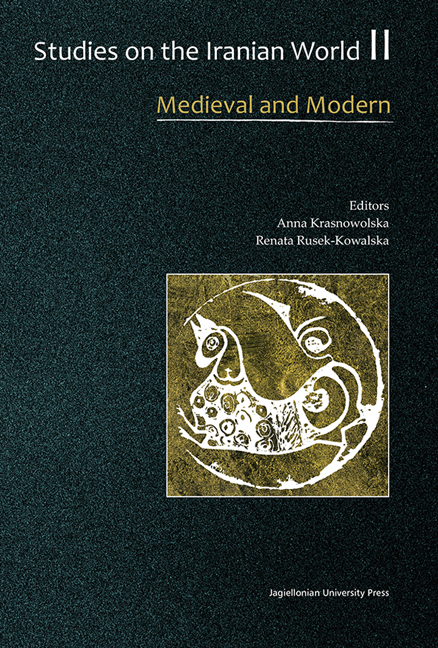Book contents
- Frontmatter
- Contents
- Foreword
- Linguistics
- Literature
- Religion
- History
- Arts
- Social and Cultural Studies
- Amulets and Medical Cures in the Yaghnob Valley: an Overview of Yaghnobi Traditional Medicine between Magic and Healing Folklore
- Persian Cookbooks, the ‘Myth’ of National Cuisine and the Process of Modernisation
- Modernity and Fertility Decline in Iran
- Medicine and Anthropology: the ‘Ambassador-Physician’ Jacob Eduard Polak (1818–1891) as a Mediator of Modernity in Iran
- Anatomy and Therapy of Eye-Diseases in Esmā῾īl Gorgānī Compared to Syriac Sources
- The Trans-Iranian Railway – History and Socio-Political Implications
- Traditional Diet and Allopathic Medicine in Diagnosis and Treatment in Iran
The Trans-Iranian Railway – History and Socio-Political Implications
from Social and Cultural Studies
Published online by Cambridge University Press: 12 January 2018
- Frontmatter
- Contents
- Foreword
- Linguistics
- Literature
- Religion
- History
- Arts
- Social and Cultural Studies
- Amulets and Medical Cures in the Yaghnob Valley: an Overview of Yaghnobi Traditional Medicine between Magic and Healing Folklore
- Persian Cookbooks, the ‘Myth’ of National Cuisine and the Process of Modernisation
- Modernity and Fertility Decline in Iran
- Medicine and Anthropology: the ‘Ambassador-Physician’ Jacob Eduard Polak (1818–1891) as a Mediator of Modernity in Iran
- Anatomy and Therapy of Eye-Diseases in Esmā῾īl Gorgānī Compared to Syriac Sources
- The Trans-Iranian Railway – History and Socio-Political Implications
- Traditional Diet and Allopathic Medicine in Diagnosis and Treatment in Iran
Summary
SUMMARY
The idea of constructing the Trans-Iranian Railway appeared for the first time in the end of the 19th century. Until the 1920's it was widely discussed by diplomats from different powerful countries (like Great Britain and Russia) who perceived it as an occasion to enlarge their countries’ sphere of influence. However, it was the Iranian government itself led by the Iranian shah that managed to complete the project. The Trans-Iranian Railway connected the Caspian Sea shore with the Persian Gulf and is considered one of the greatest engineering achievements of the 1930's. This paper presents the main aspects of the history of the Trans-Iranian Railway – from the 19th century's debates around the concept of such a connection, through the process of the line's construction during Reza Shah's reign, until the post-war period of railway development in Iran. To the historical part comments are added on some aspects of the social, economic and political consequences of the construction of the railway.
INTRODUCTION
The construction of railways has influenced heavily the economical development of various countries and accelerated the political changes in some areas, not only in Europe but also in Africa, Asia and Americas. In Iran, railways the 1930's over 10 thousand kilometres of railway lines have been constructed in Iran, affecting country's economy, politics and society. The most prominent and well known line is the Trans-Iranian Railway, the 1392-km long line that connected the Caspian Sea shore with Persian Gulf. The construction of this line not only led to socio-economic changes in various part of the country but it also played a significant political role in the modern history of Iran. Despite the line's importance for the country's development not too many studies have been focused on its history. This article aims to present the history of the Trans- Iranian Railway and discuss some political, social and economic consequences of its construction. The article is based on the study of a wide range of both Iranian and non-Iranian sources, of which the most important is Rāhāhan-e Sarāsari-ye Irān, published in Tehran in 1940.
- Type
- Chapter
- Information
- Studies on the Iranian WorldMedieval and Modern, pp. 347 - 356Publisher: Jagiellonian University PressPrint publication year: 2015



